Proposed EU rules for Swimming foods needed to combat the global challenge of obesity
On the occasion of the European Obesity Day (21st May), which recognises the increasing burden of obesity in Europe, both Specialised Nutrition Europe (SNE) and the European VLCD Industry Group would like to highlight the value of slimming foods for overweight and obese consumers, and stress the need for balanced and appropriate legislation at EU level in order to prevent consumers turning away from these regulated foods to “fad diets”. Slimming foods are specially formulated to provide consumers with the right calorie and nutrient intakes to meet their nutritional needs. These foods also need to be sufficiently “tasty” for consumers to use them all along the necessary weight-loss/ weight-management period.
Both groups therefore call upon European decision-makers to take into account a range of factors including consumers’ acceptability, in addition to the scientific assessment made on total diet replacements (TDRs) by the European Food Safety Agency (EFSA) in 2015, which considered optimal nutritional needs.
Weight problems and obesity are of increasing concern as a public health challenge in Europe. The worldwide prevalence of obesity more than doubled between 1980 and 2014, and statistics demonstrate that in 2014, 58.6% of the adult population is overweight, and 23% is obese.
The value of safe and efficient weight-loss/ weight-management products
Dieting is one of the recognised pillars of treatment for obesity – but it is essential that consumers have access to the right information and suitable products in order to effectively manage their nutritional needs. Diets that promise quick weight loss through what is often an unhealthy and unbalanced diet, so-called “fad diets”, can be dangerous as they are often not nutritionally balanced.
Foods specifically intended for weight control play a critical role in this process, helping people to lose weight and take back control of their weight, often with support from healthcare professionals. These “slimming foods” are specifically formulated to ensure consumers who wish to control calorie intake still receive the vital nutrients they require in order to maintain a healthy nutritional balance.
Slimming foods like this have been regulated for 20 to 30 years at EU and international levels in order to provide consumers with safe and effective weight-loss / weight-management products. Nonetheless, they must also meet consumer expectations in terms of taste and price, to avoid consumers turning to other unhealthy, unregulated and possibly harmful diets.
The importance to have balanced EU provisions on TDRs
The rules currently being re-considered by the European Commission would considerably restrict the options of manufacturers in terms of product taste and product variety, substantially increase costs for consumers and, because of requested minimum daily amounts, make TDR manufacturing very difficult, if not impossible to undertake.
Because of their significant concerns about the negative impact that the proposed rules could have on consumers’ behaviour, SNE and the European VLCD Industry Group are calling for an EU research program under the lead of the Joint Research Centre to assess in a suitable timeframe to which extent EFSA’s suggested composition criteria for TDR is technologically feasible. It would also look at whether the industry’s technological knowledge may offer innovative opportunities which creates an economically viable long-term solution for the TDR sector. During this period, current EU requirements for TDR would continue to be applied, in order to ensure consumer protection.
Notes to editors:
- The European Very Low Calorie Diet (VLCD) Industry Group is the trade body for manufacturers and distributors of VLCD products.
- Specialised Nutrition Europe (SNE) is the trade association representing the interests of the specialised nutrition industry, including slimming foods, across the European Union.
- There are a range of slimming foods that are used for different purposes:
- Very Low Calorie Diets: diets based on specific slimming foods exclusively, ensuring a fast change in a restrictive diet (400 to 800 calories/day according to Codex standard). The proposed program must be strictly respected.
- Low Calorie Diets: diets based on specific slimming foods exclusively, for an 800-1200 calorie diet. Advice of a healthcare professionalis recommended should these products be used for more than three weeks.
- Total meal Replacements for weight control: 200-400 calorie products per meal (according to current EU rules (Directive 96/8/EC)), formulated to replace one or two meals /day and to be used as part of an energy restricted diet, other foodstuffs being a necessary part of the diet.
- Partial Meal Replacements / snacks: to replace one dish of a multiple course meal, or one snack, contributing to reach an optimal protein daily intake in the context of an overall energy restricted diet, or as a support for the stabilization of the weight loss. Often associated with meal replacements in weight loss programs.
- Total diet replacements cover Very Low Calorie Diets and Low Calorie Diets.
